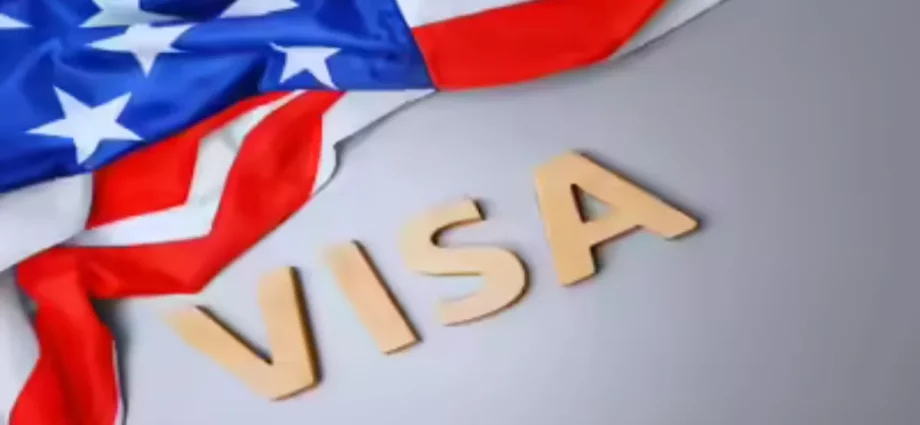The process of applying for a US tourist visa is often described as stressful, unpredictable, and nerve-wracking. Thousands of Indians apply for the B1 or B2 visa every year, hoping to travel to the United States for tourism, family visits, or short business trips. Long wait times, strict questions, and the fear of rejection make the visa interview experience even more intense. But every now and then, a story surfaces that gives applicants a fresh sense of hope.
Recently, an applicant shared an experience that has gained attention because of how simple and smooth the approval process was. The applicant received the B1/B2 visa without facing complicated questions, extra scrutiny, or document checks. What surprised people even more was the officer’s unexpected remark: I don’t need to see anything else. Your answers are enough.
This single sentence has become a talking point among upcoming travelers who are preparing for their visa interviews. It highlights an important truth about the US visa process. While documents matter, confidence, clarity, and honesty during the interview are far more important.
What Happened During the Interview
According to the applicant, the entire interview lasted barely two minutes. The officer asked basic questions such as the purpose of travel, current employment, and duration of stay. The applicant answered with clarity, without rushing, and without giving unnecessary details. After listening to the responses, the officer smiled and said something unexpected. I don’t need to check anything. Your answers are straightforward. Your visa is approved.
This moment left the applicant stunned because many people carry thick files of documents and still end up feeling nervous or unsure. The officer’s comment also shows how US visa interviews are more about assessing intention rather than verifying papers.
Why This Case Is Important
The story is important for two reasons. First, it breaks the myth that documents alone secure a visa. Second, it shows that applicants who clearly explain their travel plans can be approved in minutes. With long waiting periods and a high number of applicants from India, many people worry excessively about the interview. Cases like this help create a more realistic understanding of what consular officers actually look for.
The US embassy has repeatedly said that most decisions are based on the short conversation at the window. Officers evaluate how genuine the traveler’s purpose is, whether the applicant has ties to their home country, and if there is any risk of overstaying. When a person’s answers naturally reflect stability, intention, and honesty, the interview becomes smooth.
What Applicants Can Learn From This Story
There are several lessons for anyone preparing for a US B1 or B2 visa interview:
Clarity matters more than complexity. The applicant did not try to impress the officer. They simply shared their travel plan in simple terms.
Confidence without over explaining is the key. Many people make the mistake of giving long, confusing answers. Short and clear responses work better.
Honesty can be felt instantly. Officers are trained to detect uncertainty or inconsistent stories. Being honest makes the process easier.
Strong ties to home country are essential. The applicant’s stability in terms of job and family made the officer confident.
Documents are supportive but not always required. Officers rarely ask for papers unless they feel something needs clarification.
Why B1 and B2 Visas Are in High Demand
The United States continues to be one of the most popular destinations for Indian travelers. Whether it is visiting family members, tourism across iconic cities, attending business events, or participating in professional meetings, the B1 and B2 visa categories cover a wide range of short-term travel needs. In recent years, the demand has increased sharply due to rising incomes, expanded global business opportunities, and more Indian students and workers living in the US.
This high demand often results in long waiting periods. Some cities in India have wait times that extend several months. Because of this, many applicants feel pressure to perform perfectly during the interview. Stories like this one remind them that simplicity and truthfulness work far better than over preparation or rehearsed answers.
The Human Side of Visa Officers
Another important angle in this story is the human aspect. Visa officers are not trying to reject as many applicants as possible. They are trained to evaluate each case fairly and efficiently. Their job is to determine whether the applicant will follow the rules of the visa and return to their home country on time. When they find applicants who clearly fit the requirements, they approve the case without delay.
The officer telling the applicant that they did not need to check additional documents shows that they rely on professional judgment. If the applicant appears genuine, the officer respects that.
Final Thoughts
While many people believe that getting a US tourist visa is a complicated process, this case shows that it does not always have to be stressful. A well prepared applicant who understands their travel purpose and presents themselves honestly stands a strong chance of being approved easily.
This story also offers encouragement to future applicants. Instead of being afraid of the interview, they can focus on expressing their intention clearly. There is no fixed formula for success, but confidence, clarity, and honesty remain the foundation of a positive outcome.
As the number of Indian travelers to the US continues to rise, stories like these remind everyone that the visa process, though strict, is also fair and human centered. The applicant who walked out smiling with an approved B1/B2 visa did not depend on luck. They depended on truth and simplicity, and it worked in their favor.
